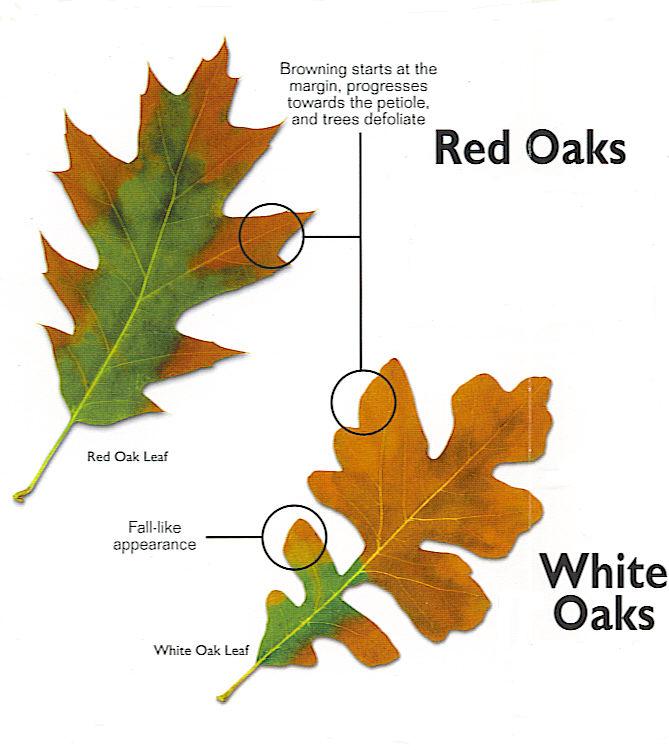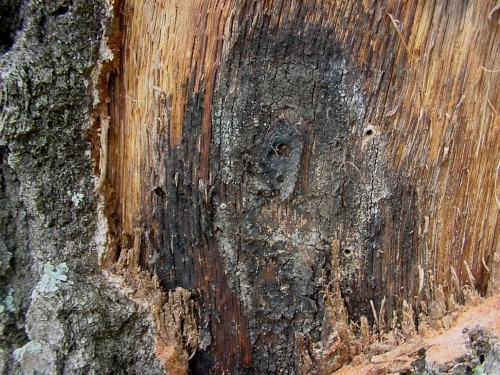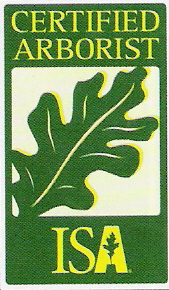Oak Wilt
Ceratocystis fagacaerum
Prompt diagnosis is necessary!
The diagnosis includes consultation regarding plan of action and preventative measures.
Many homeowners are receiving a diagnosis of Oak Wilt, when actually the health issue with their oak tree is Anthracnose or the two-line Chestnut Borer. Anthracnose is commonly misdiagnosed as oak wilt. Many homeowners are removing oaks that have been misdiagnosed...although anthracnose and two-lined chestnut borer can be a precursor to oak wilt, there are measures that can be taken to improve the health of the anthracnose and two-lined chestnut borer diagnosed tree and stave off the possible next step of oak wilt.
(Anthracnose, Two-lined Chestnut Borer & Oak Wilt symptoms below)
Isolate diseased trees from healthy trees!
Quercus
Treat healthy oak trees with fungicide injections as a preventative!
Oak wilt is a lethal disease caused by the fungus Ceratocystis fagacaerum. The fungus inhabits the water conducting vessels of the tree, and all species of oaks are susceptible in varying degrees. The fungus disrupts water movement to the crown and the leaves eventually wilt and fall to the ground. Red and pin oaks typically die within 4 to 6 weeks of infection, while white and bur oaks have more resistance and may survive if only a small percentage of the tree is diagnosed with the disease and treatment is started immediately.
Most of the spread of oak wilt is through root grafts between adjacent trees and by sap feeding beetles(Picnic beetle) (Nitidulidae) or bark beetles (Scolytidae) carrying fungal spores from tree to tree.

Symptoms of Oak Wilt
The primary symptom of oak wilt is the wilting of leaves and defoliation. Browning begins on the margin of the leaf and moves inward, and there is a distinct line between dead tissue and living tissue. Leaves normally fall before they have completely browned. In red and pin oaks, wilting progresses from the top of the canopy downward, while in white and bur oaks the wilting may occur on branches scattered throughout the tree.
Streaking of the sapwood beneath the bark is a sign of the defense response of the tree and provides further evidence of oak wilt. An additional sign of the disease is the presence of fungal spore mats on red and pin oaks. They split the bark open and attract insects with their fruity odor.
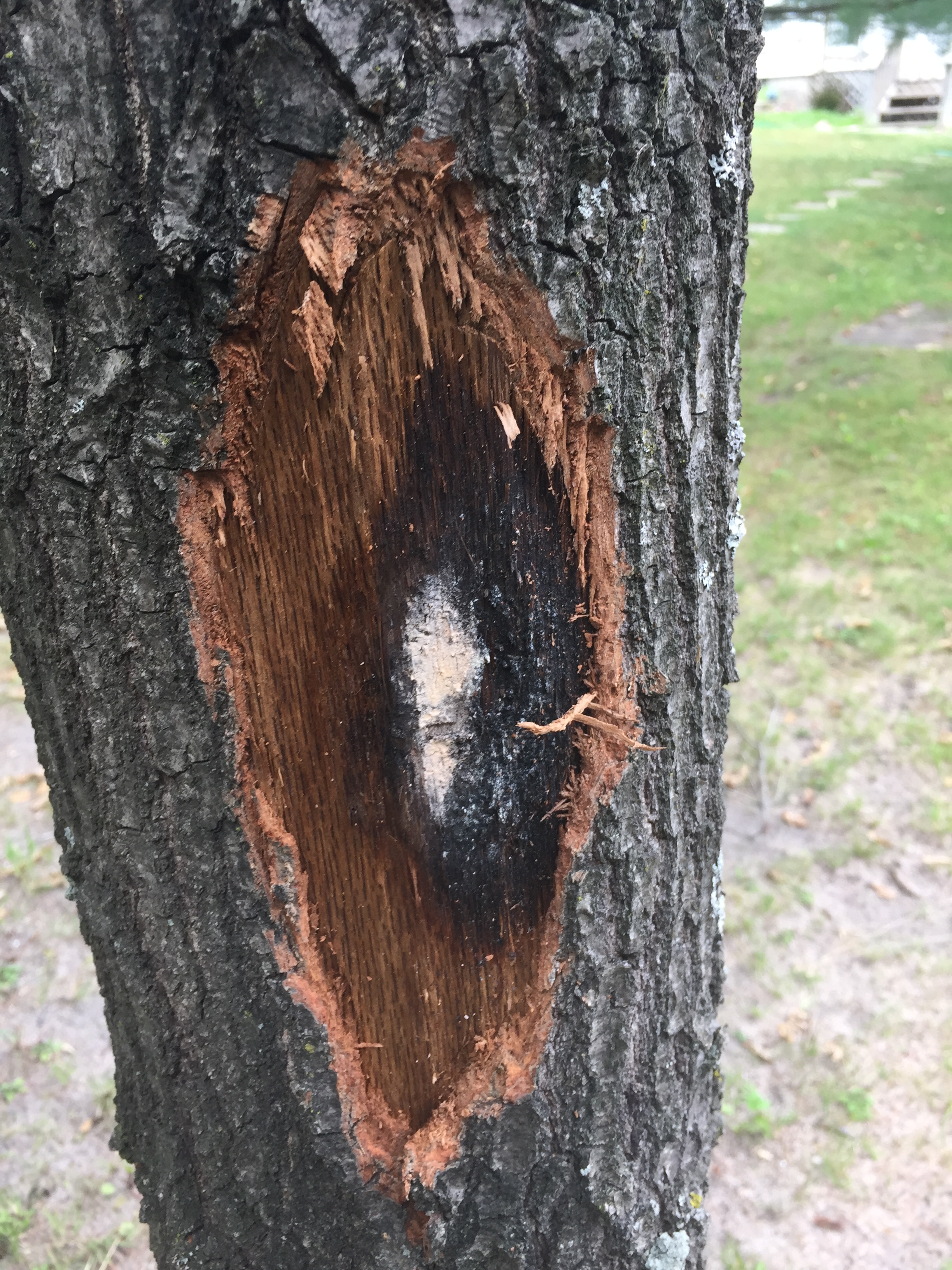
Also, remember .... never prune your oak trees in the summer. We at the Gardens, never prune oaks (unless an absolute emergency) until the temperature is a consistent 38 degrees or below.
If removal of a diseased oak is necessary in the spring, summer, or fall, trenching is necessary to break the grafting between other oaks on the property. Even if oak wilt is not present on your property; it is recommended that oak trees be removed in the designated degree days. If storm damage occurs in the spring, summer or fall, and pruning is necessary, paint/shellac/wound paint all cuts.
If you are worried about your oak trees, please contact us. The Arborists will diagnosis your oak trees and recommend a treatment plan. Oak wilt can be treated if diagnosed early enough in white oaks and must be treated in red oaks before the disease is diagnosed.
Oak Anthracnose
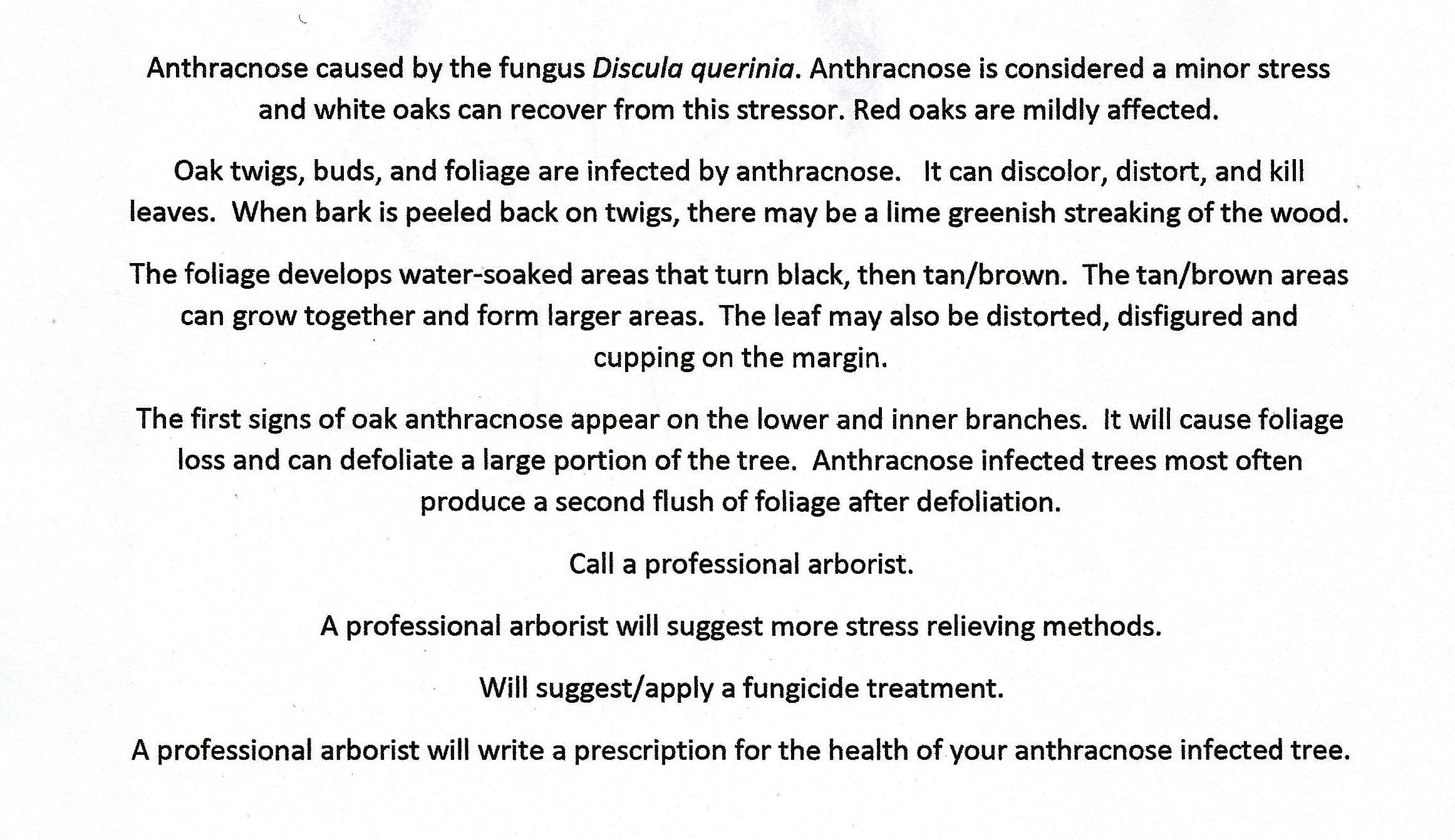
Two-Line Chestnut Borer
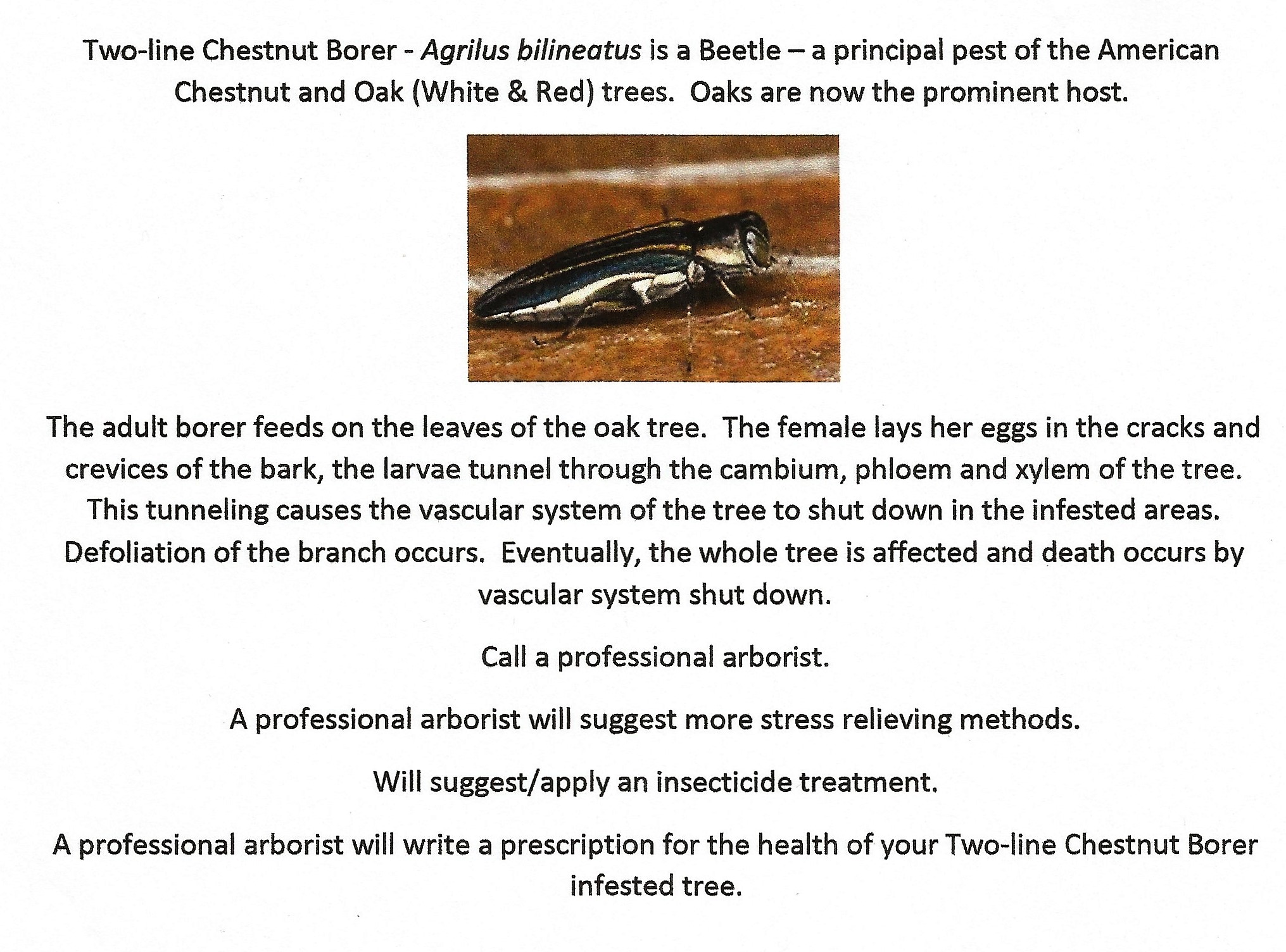
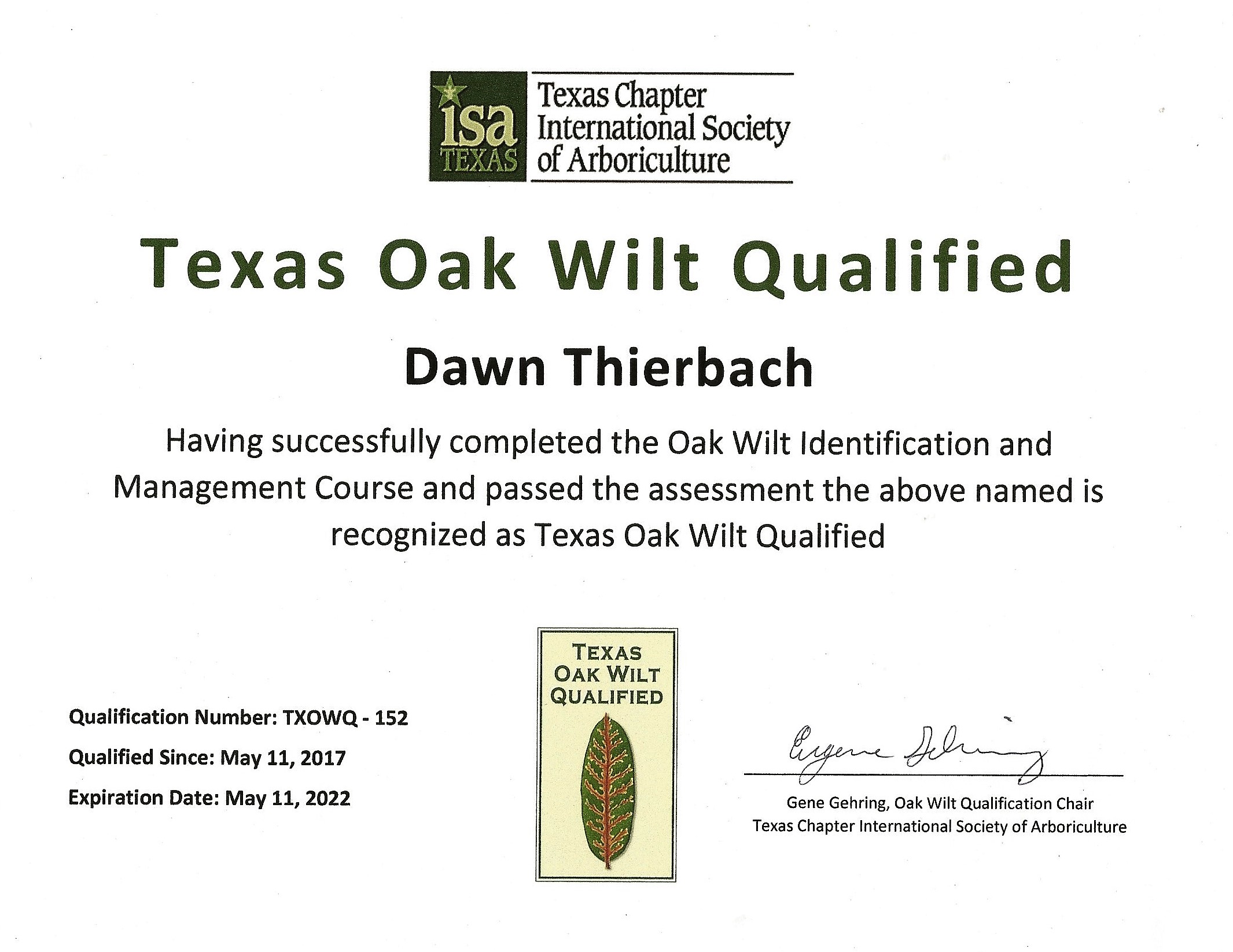
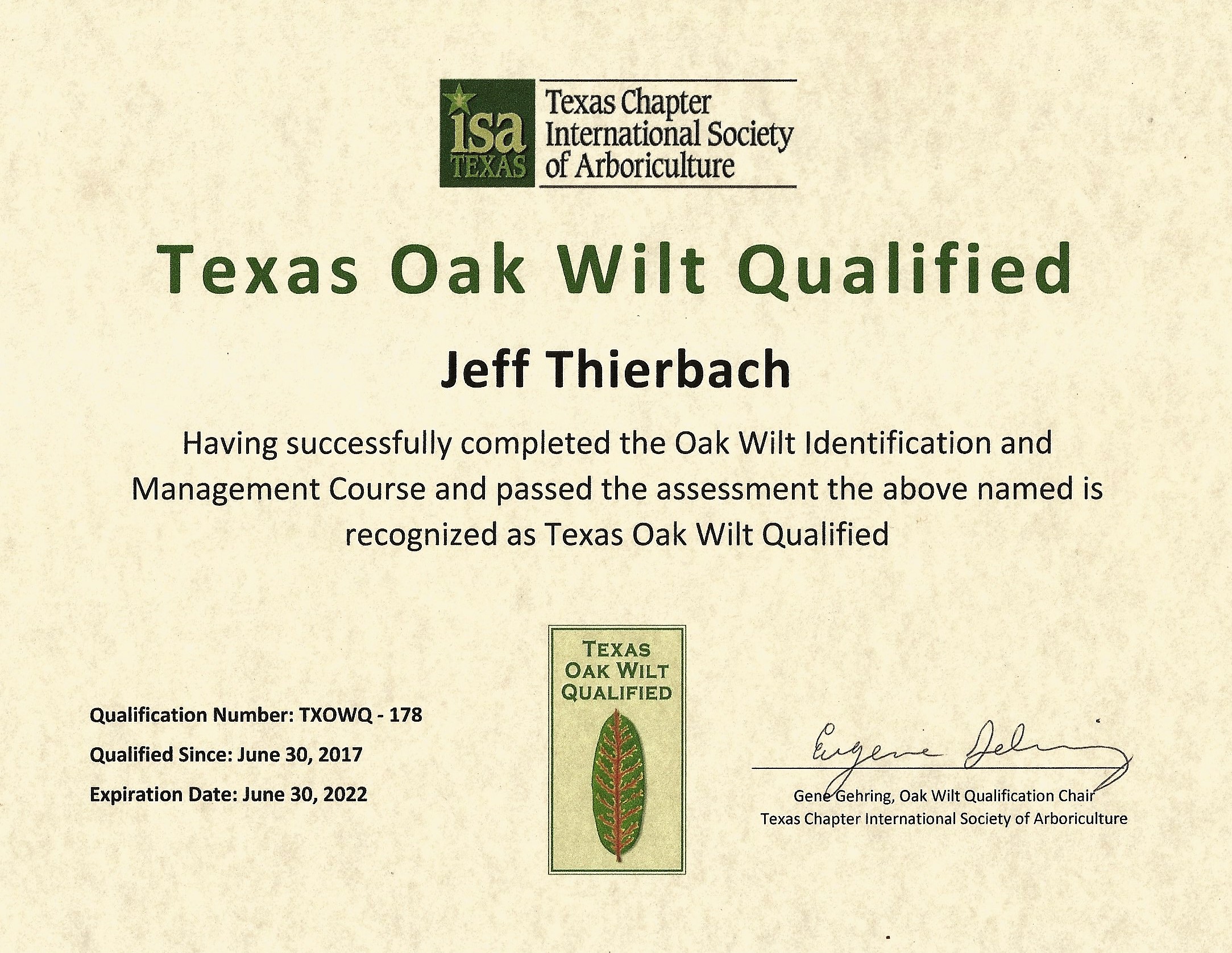

810-338-6531


